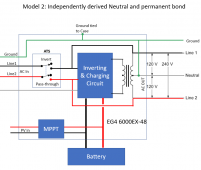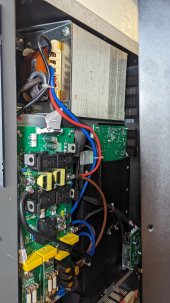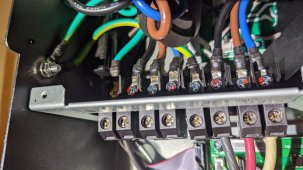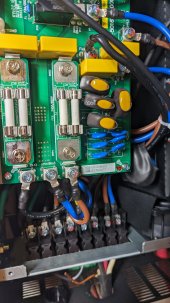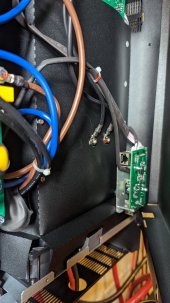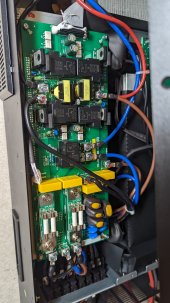Subdood
Photon Wrangler
Thanks again, you certainly seem to have a handle on things electrical. I was an electronics technician for almost 30 years, but I'm still catching up on actual electrical issues. The distance between my inverter and critical loads panel would be about 65ft, and in conduit, so 10ga probably would be pushing it. I'll probably use 8ga, which obviously costs more, but I want to do it safely.I am not a certified electrician, but have been wiring stuff for 30+ years, including several remodels and my current house. I understand NEC specs and requirements, I read 1 gauge wire as being 130 amp rated with 75C insulation rating.
each EG4-6000 unit can charge at a maximum of 120amps, so we are under that 130amp rating.
from a charging standpoint, each EG4 LifePower 48V battery is rated at 100amps individually, so the rack of six batteries could take 600amps max charging rate. the two inverters can output a total of 240amps, so at maximum, they can do 40% of the combined battery's capabilities, so no worries there. that's a .4C charge rate, which is a little higher than a lot of batteries are rated, which is .3C.
from a discharge standpoint, the batteries are also rated at 100amp each as well, with a recommended 30amp continuous rating. when charging my tesla, and both units are running at that 98-102% level for an hour or more, the cables certainly get warm, but not even too close to grip firmly. it's generally understood that a human can hold something that's 60C (140F) for five seconds without burning, so my cable had to be way cooler than that. I don't have Will's super cool Klein temp gauge, but I do have the USB-C model on the way (here in a few weeks).
as to the output connections from the inverter to the breaker panel, as you noted, the manual suggests 10gauge, and that supports the inverters rating of 6000watts. 6000watts across 240 volts is 25 amps, and 10 gauge is generally rated at 35 amps with a 75C insulation. note that the manual recommends 90C rated wire, which is satisfied by your typical romex style wire, service cord (SO), or even individual THHN/THWN insulated wires. at those temps, 10ga wire is rated at 40amps, but the NEC limits the operating temps of the conductors to 60C, so that derating limits the wire to 30amps. in my case, I had some leftover 6gauge laying around (rated 55amps at 60C), so I just used that. it just had to be bigger than 10gauge. I used 40 amp breakers, as that's what the manual lists for the AC in breaker, but there's no AC out breaker size listed. if using 10ga wire, I think the correct breaker would be 30amp breakers.
I will take a moment here and point out the worst acronym that you will ever come across when doing any kind of construction, wiring, plumbing, etc., and that's "AHJ". it stands for "authority having jurisdiction". that means that regardless of the national electric code (NEC), standard plumbing code, or any other widely-known best practice, you've got some local bureaucrat that can override anything they want in your particular location. this could affect anything in your install, such as wire and breaker sizes, clearance in front of and around your inverters, how high off the ground they have to be placed and more. while it never gets to this, they could even dictate what specific brands are allowed within their jurisdiction. at the end of the day, your local inspector has so sign off on the install, or it can't be put into production. it's honestly irritating as all get out, and you different standards in different locations. thankfully, the majority of the country sticks to the NEC, but there's still so much left to interpretation in the NEC code. bottom line: consult your AHJ before diving into making any install permanent at your house.
hopefully with all of the math and stats and ratings in there, I did not mess anything up. please correct me if I did.
I'm not going to run as much as you are, my system is for 120V critical loads for now. Might add a few smaller 240V loads later. I would have the input of the inverter tied to our main service panel, so that utility can charge the battery and/ or power the loads when need be. My concern for the wiring was in regards when the inverter is in bypass mode; that more current than the inverter is capably putting out at max inverting power might be passing through, and that might be more than 40A, so 10ga would be a no-go. Would I be pulling 40A at any one time? Probably not, but, 8ga should cover such a possibility.
Last edited:




